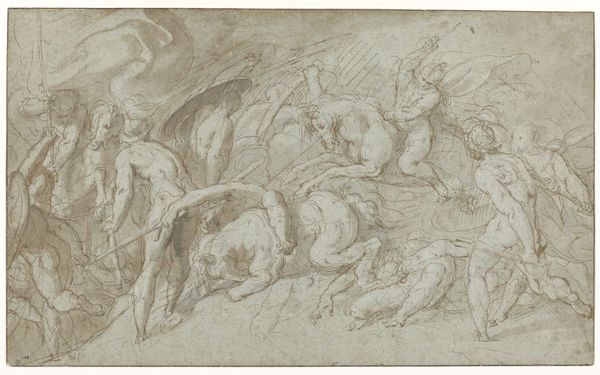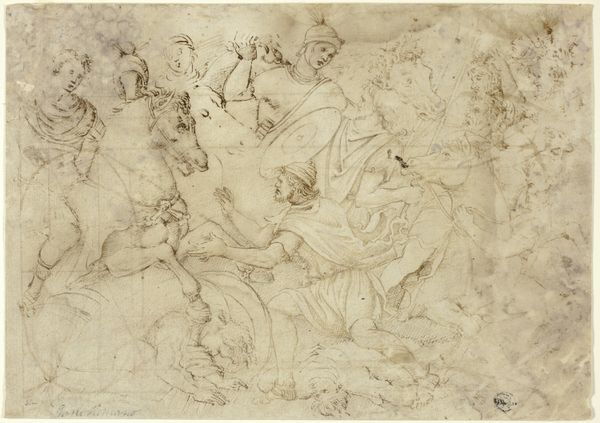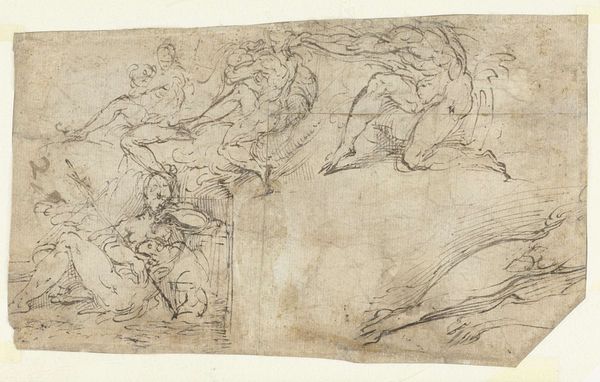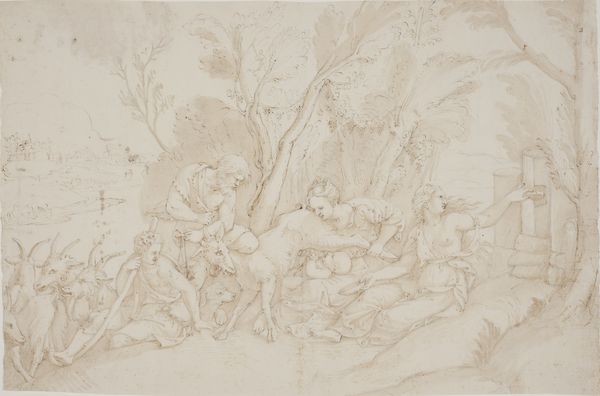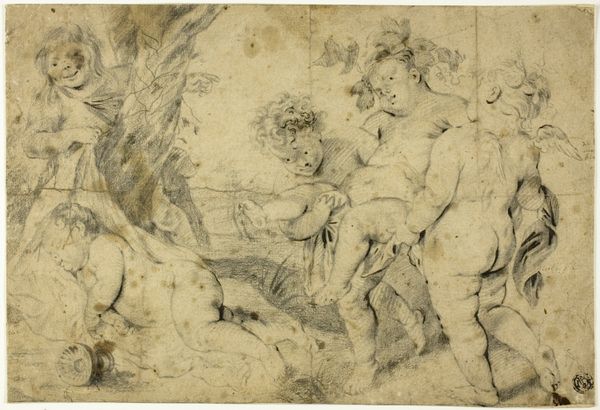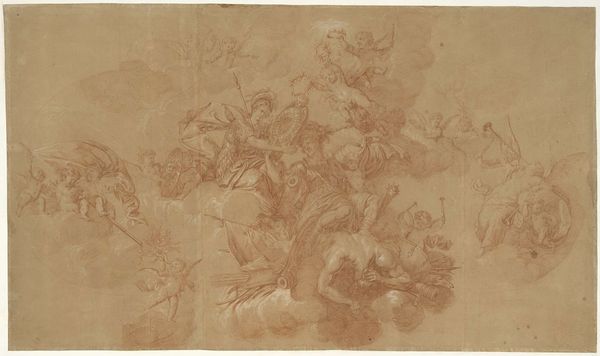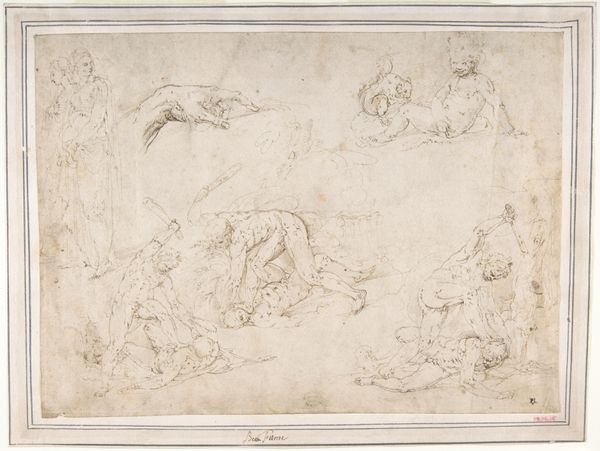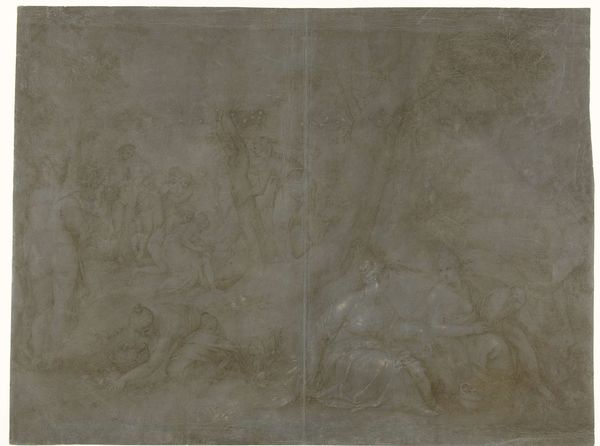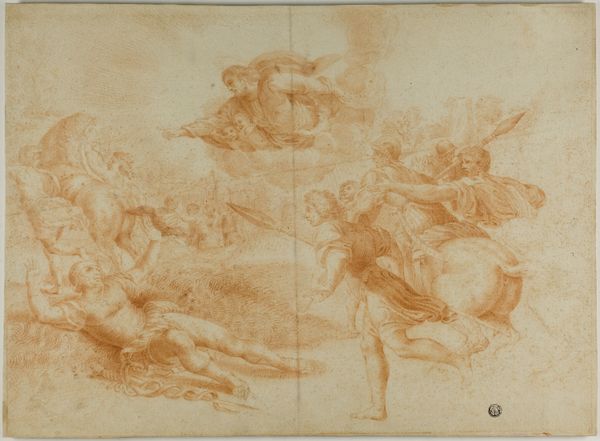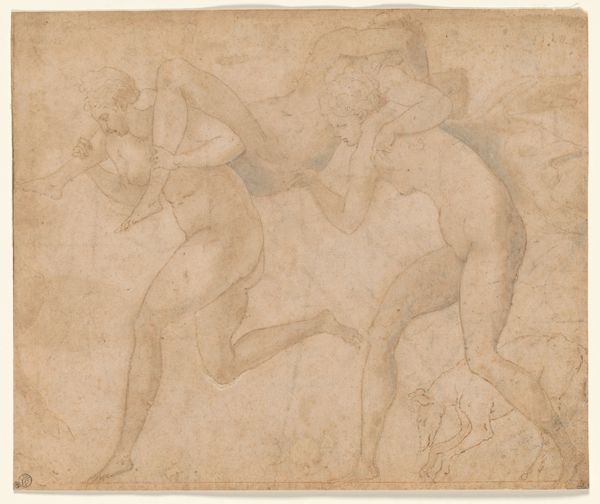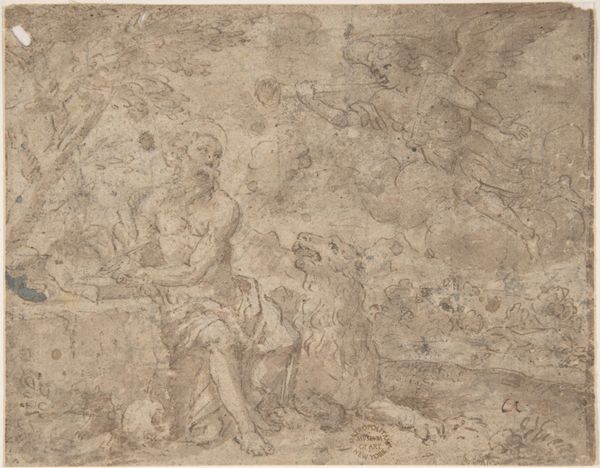
Schetsen van H. Marcus die het leven van een slaafgemaakte man redt 17th century
0:00
0:00
drawing, paper, ink
#
drawing
#
water colours
#
etching
#
figuration
#
paper
#
ink
#
line
#
history-painting
#
italian-renaissance
Dimensions: height 200 mm, width 286 mm
Copyright: Rijks Museum: Open Domain
Curator: There's a rawness to this piece, isn’t there? An immediacy. It’s like catching the artist mid-thought. I find that compelling. Editor: And, technically, we’re looking at a 17th-century drawing titled "Sketches of St. Mark Saving the Life of a Slave." Giulio Carpioni is the artist behind these ink, watercolor, and paper sketches. Currently, this drawing resides here, in the Rijksmuseum collection. Curator: Saint Mark? Hmm. What truly strikes me are the swirls of movement. Bodies rendered in delicate lines, gestures caught in fleeting moments. It makes me think of dance—or perhaps struggle. What narratives were swirling in Carpioni’s head when he made this? It is really quite moving! Editor: Given its historical context, that struggle is more than likely connected to the prevalent socio-political issue of the period: slavery. And let’s not forget the potent symbolism inherent in the figure of a saint intervening in the lives of the oppressed. Curator: Symbolism, yes, absolutely. But I feel something beyond mere iconography. It’s the artist's touch, the hesitant yet purposeful strokes. The incompleteness hints at the complexities and maybe even ambiguities inherent in acts of intervention. Doesn't it ask us if salvation is ever truly clean-cut? Editor: I think it reflects Carpioni’s critical thinking in light of history itself. Italian Renaissance, right? A movement rife with its own contradictions when you look closer. The drawing challenges that era, it does not idealize it. How should an artist engage with such complex histories? Curator: Exactly! It invites questions more than providing answers, like all great art does, perhaps. You look, and then look deeper and still don't understand everything but can relate on many layers. Editor: Indeed, its power lies not in the glorification of a historical event, but in prompting viewers to grapple with difficult historical realities and legacies still resonant today. A truly complicated moment—stylistically, and ideologically—and, hopefully, not too soon forgotten. Curator: I agree! These fleeting visions still manage to hit right at the heart of human connection and maybe, just maybe, give us a lens to look through.
Comments
No comments
Be the first to comment and join the conversation on the ultimate creative platform.
